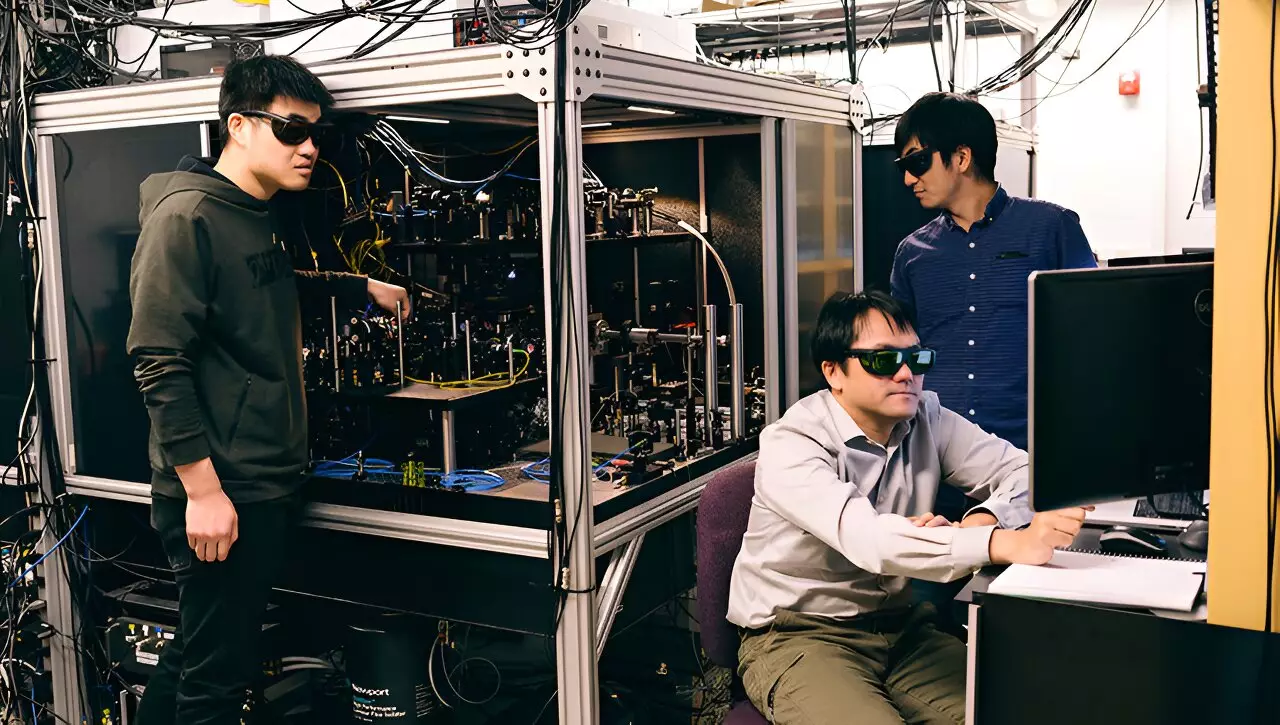In a groundbreaking discovery, researchers at Purdue University have successfully trapped alkali atoms, specifically cesium, on an integrated photonic circuit, enabling them to behave like a transistor for photons. This novel development paves the way for the creation of a quantum network utilizing cold-atom integrated nanophotonic circuits. Led by Chen-Lung Hung, the team has outlined their findings in the prestigious journal, Physical Review X.
Through the use of lasers, the researchers were able to cool and tightly trap cesium atoms on an integrated nanophotonic circuit. These atoms were cooled to an astonishingly low temperature of negative 459.67 degrees Fahrenheit, rendering them almost motionless. By employing a ‘tractor beam’ aimed at the photonic waveguide, the researchers were able to position the atoms in close proximity to the waveguide, enabling efficient interaction with the confined photons.
The crux of the research lies in the demonstration that the atom-coupled microring resonator functions as a “transistor” for photons. By gating the flow of light through the circuit using the trapped atoms, the researchers were able to selectively allow or block the transmission of photons based on the state of the atoms. This gating mechanism was shown to be highly efficient, with up to 70 atoms collectively coupling to photons on the integrated photonic chip.
The collaborative effort that led to this groundbreaking discovery was based out of Purdue University in West Lafayette, Indiana. Hung served as the principal investigator, overseeing the project, while Zhou conducted the experiment to trap the atoms on the integrated circuit. The critical experimental setup was performed by Zhou and Tamura, showcasing the meticulous and detailed nature of the research process.
The successful trapping of atoms on the integrated photonic circuit opens up a myriad of research avenues for the team. With the potential to arrange the trapped atoms in an organized array along the waveguide, the researchers aim to explore the concept of ‘selective radiance’ to enhance photon storage fidelity within a quantum system. Additionally, the team plans to delve into the realm of few- and many-body physics with atom-photon interactions, potentially reaching quantum degeneracy with strongly interacting Bose-Einstein condensates.
The achievement of trapping alkali atoms on an integrated photonic circuit represents a significant milestone in the field of quantum networking. By harnessing the unique properties of cold atoms, the researchers at Purdue University have opened up new possibilities for studying collective light-matter interactions and advancing the realm of quantum computing. The future of this research holds immense promise, with the potential to revolutionize the way we perceive and utilize information processing at a quantum level.



Leave a Reply